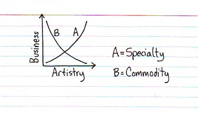 What impact will the economic stimulus have on educational materials and technology? A front page New York Times article yesterday left no doubt that education will be a significant part of the legislation. The Times reports that the total education allocation could be as much as $75-$95* billion a year over current allocations for the next two years. In sector that accounts for about $530 billion in total expenditures, 92% of which has traditionally come from state and local taxes, this represents a seismic shift in the Federal Government’s influence on the market.
What impact will the economic stimulus have on educational materials and technology? A front page New York Times article yesterday left no doubt that education will be a significant part of the legislation. The Times reports that the total education allocation could be as much as $75-$95* billion a year over current allocations for the next two years. In sector that accounts for about $530 billion in total expenditures, 92% of which has traditionally come from state and local taxes, this represents a seismic shift in the Federal Government’s influence on the market.
The questions executives in the industry have to wrestle with are how much of the total will be spent on instructional materials, when will funds flow, and what products will schools buy? The answers to these questions will drive investments, hiring, and M&A for the next couple of years.
I’ve talked to a few folks around the industry to see what people are thinking and the notes below represent a collective set of insights. It is still early days, the legislation probably won’t be in a final format until mid to late February, but many companies are making decisions now about their ’09 plans.
 Last week the New York Times published a piece titled $200 Textbook vs. Free. You Do the Math by Ashlee Vance.
Last week the New York Times published a piece titled $200 Textbook vs. Free. You Do the Math by Ashlee Vance. The Education Business Blog
The Education Business Blog




 How can technology and innovation reshape education?
How can technology and innovation reshape education? 
 One of the fundamental shifts
One of the fundamental shifts  What impact will the
What impact will the 
 Products designed for the classroom must meet the needs of teachers first. If students are the primary users of your instructional materials this may sound a little backwards – but it isn’t. Teachers can make or break your product before a student ever sees it.
Products designed for the classroom must meet the needs of teachers first. If students are the primary users of your instructional materials this may sound a little backwards – but it isn’t. Teachers can make or break your product before a student ever sees it.